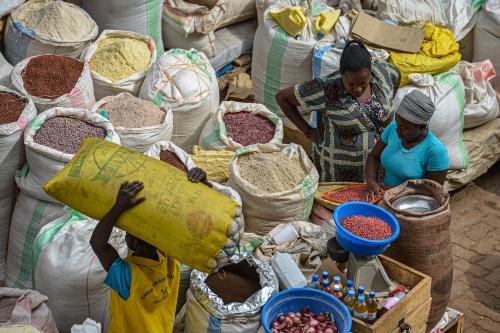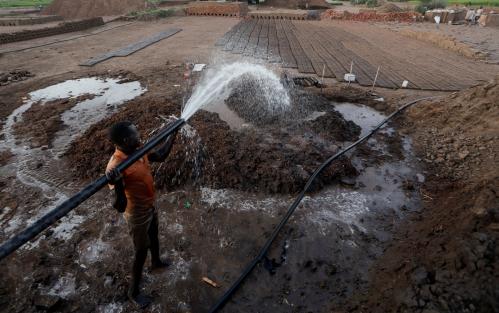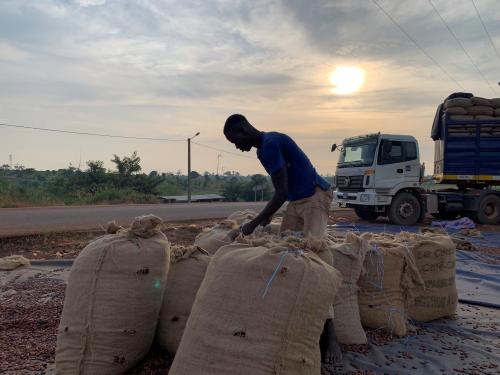The “Africa Rising” narrative of strong economic growth over the past 20 years fueled by rising demand for primary commodities has failed to generate enough good jobs, in spite of the demographic dividend of a large working-age population. As recently put at the African Innovation summit, the development agenda has shifted from socioeconomic transformation to the lowest common denominator, managing poverty. This trend is exemplified in the African Continental Free Trade Area (AfCFTA) Agreement which, so far, still largely concentrates on a “negative” agenda; in other words, the focus is on removing policy-imposed barriers to trade.
Now, though, regional integration agreements are moving toward a “positive” agenda requiring resources to provide goods not supplied by the market. One example is the Desert to Power Initiative, an effort stretching over the Sahel aimed at connecting 250 million people with green electricity through a combination of public, private, on-grid, and off-grid projects expected to deliver 10 gigawatts of solar energy by 2025. Such projects require cooperation among many actors, which is why regional integration agreements are increasingly described in terms of “regional cooperation and integration.”
In a recent paper, we revisit African regional integration through the lens of providing regional public goods (RPGs) rather than removing distortions to help markets function better. Our approach departs from the traditional top-down one used by the eight African Union (AU)-recognized regional economic communities (RECs) and the other 25 or so specialized regional organizations (ROs), which have sought to introduce new institutional forms and management systems, with external support but often beyond absorption capacities. Combined with overlapping country memberships across RECs and ROs—a logical outcome of the fragmented political and geographic landscape in which spillovers often do not correspond to the geography of the organizations overseeing integration—this top-down approach has led to a regional “implementation gap.” Indeed, most often, regional agreements and commitments have met with overstretched national administrations and failed to take account of political interests and incentives.
Such a result is hindering the region’s progress toward its shared goals: To succeed with economic transformation and, indeed, to deal with emerging problems related to climate and security, integration requires greater regional cooperation and implementation of commitments.
At its 50th anniversary in 2013, the AU launched the 50-year Agenda 2063 program “The Africa We Want” with 15 flagship projects, heralding a shift toward continent-wide projects. As opposed to the “removing-distortions” focus of REC integration efforts, this agenda is one of providing RPGs where markets are lacking, so success depends more strongly on collective action across jurisdictions.
The Agenda 2063 program has not been presented in terms of RPGs, which is a more adaptive approach to different circumstances and “problem driven.” For any public good, the issue is how contributions materialize into the public good. For example, when eradicating a disease or when building a regional corridor, success depends on the effort by the country that contributes least. This type of public good is known as “weakest link”—among the different “aggregator technologies”—and is a key co-determinant along with political incentives of the availability of any RPG. The paper presents the 15 Agenda 2063 flagships from this perspective, which helps evaluate the probability of success.
Let’s consider the AfCFTA, a threshold RPG both for signature (22 ratifiers are required for AfCFTA to become operational) and for overall benefits since much depends on the large economies fully implementing the agreement. Moreover, since low transport costs also enter into the determination of aggregate benefits, weakest-link transport bottlenecks could arise since a small country along a corridor between two large countries could drastically reduce overall benefits. Together, these different RPG characteristics determine the likelihood of success and overall benefits of the AfCFTA.
We then examine five examples of RPG projects. The first example—cooperation over COVID-19 around mid-2020—reveals that cooperation was limited, and focused mainly around sharing information or nudging countries to increase testing. Collective action on harmonizing joint procurement and distribution of test kits has only taken place at a limited scale.
In another case, digital connectivity across East Africa through the One Network Area (ONA), a summation-type RPG, has shown success, illustrating the benefits of being driven bottom-up by the private sector. While distributional conflicts across members arose when it came to setting up a common mobile network, such obstacles are being addressed as parties are about to drop surcharges and roaming fees for calls among members within the region.
River basins show the limits to cooperation when externalities are one-way like the “upstream-downstream” opposing interests along rivers, as has been the case with the Grand Ethiopian Renaissance Dam example. In the case of the Senegal River Basin Development Organization, early success from joint infrastructure has given independence to the supranational organization. Leadership by Senegal, which acted as a “benevolent hegemon,” helped overcome the weakest-link problem to the benefit of all.
Efforts to set up regional power markets have been plagued by promises and hurdles. Gains from exchanging power across power pools would be huge, but lack of confidence and a long list of critical conditions (sufficient excess capacity, reliable interconnections, independent utility companies, and regionalization of regulatory bodies) have largely prevented the development of well-functioning power pools.
Finally, while cooperation on physical connectivity through road networks is taking place along transport corridors, progress has often been slowed down by indivisibilities (a hurdle to obtain threshold supply) and the challenge of addressing administrative weakest links across the networks.
These observations motivate closing remarks about prospects for the new continental projects. We propose a bottom-up, six-step “find and fit” iterative strategy. Rather than starting from a top-down strategy where the approach often seeks to apply best-practice solutions, we recommend starting by addressing the problem through the provision of an RPG, then identifying suitable coalitions, and then implementing with follow-up adaptation and repeated identification of the regional problem and its RPG type. Iteration continues until functional capabilities needed to coordinate cooperation across countries take hold. By then, growing legitimacy should open the door to deeper cooperation.
The Brookings Institution is committed to quality, independence, and impact.
We are supported by a diverse array of funders. In line with our values and policies, each Brookings publication represents the sole views of its author(s).









Commentary
Delivering regional public goods is key for successful African regional integration
June 16, 2021